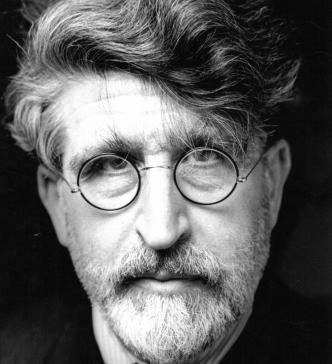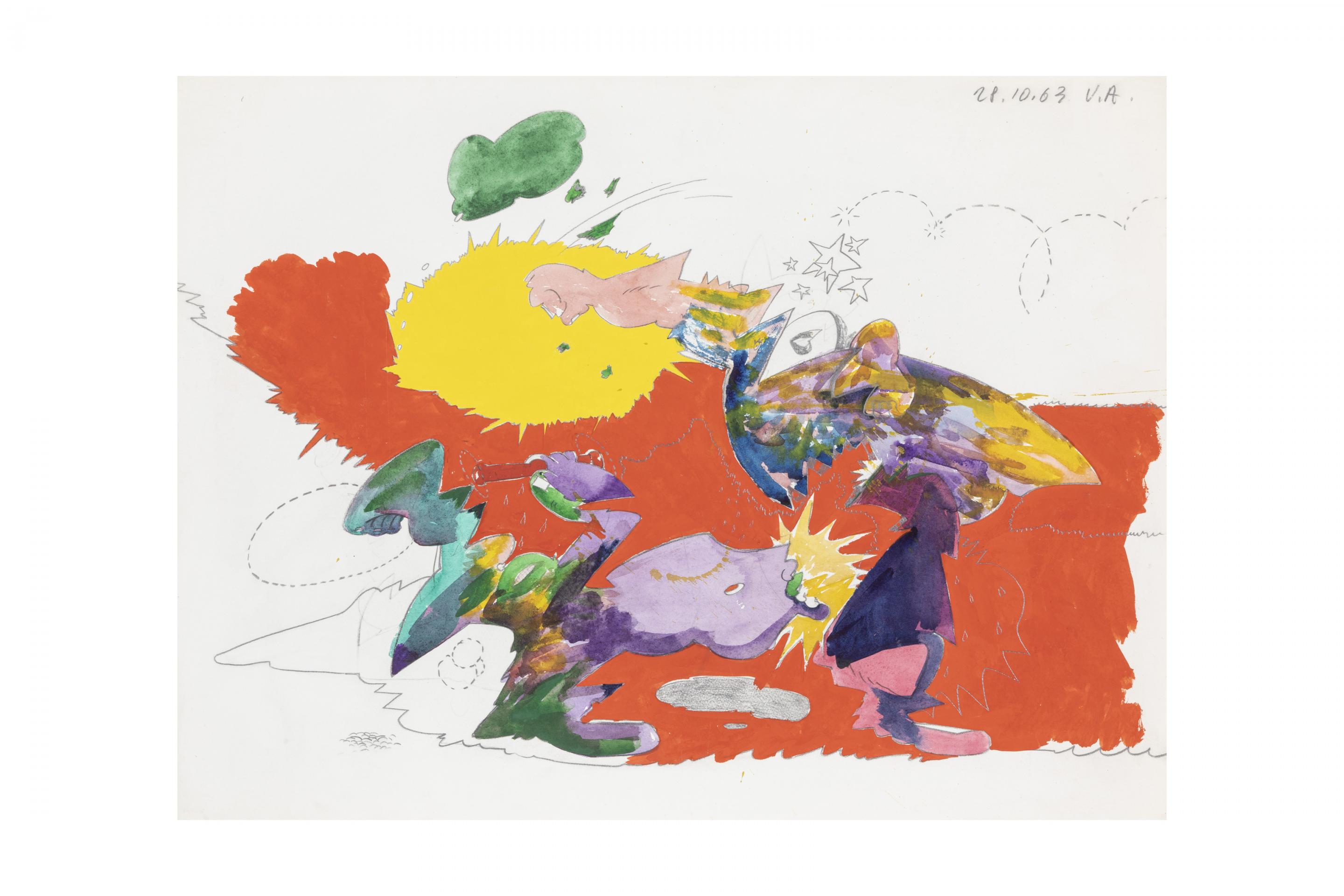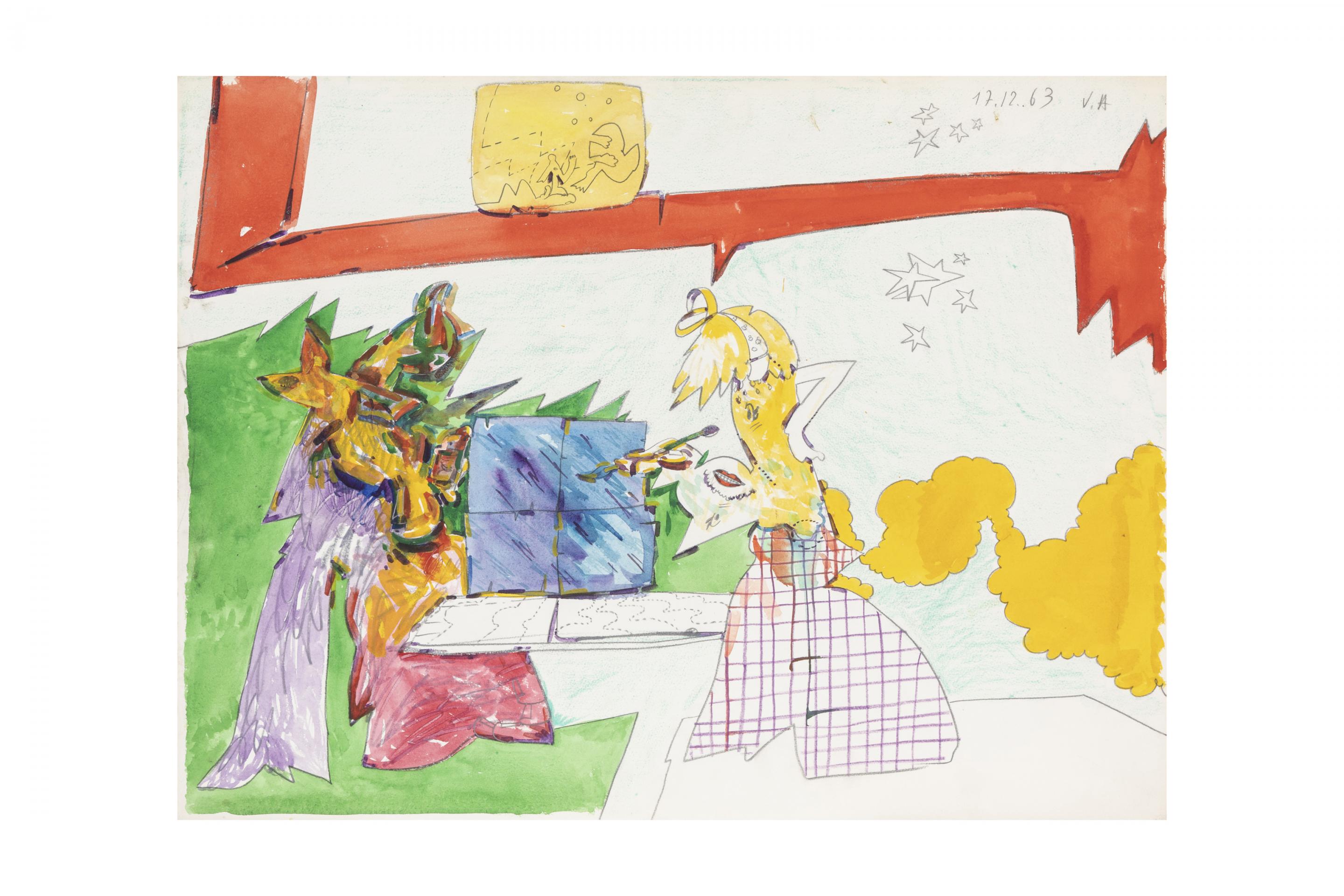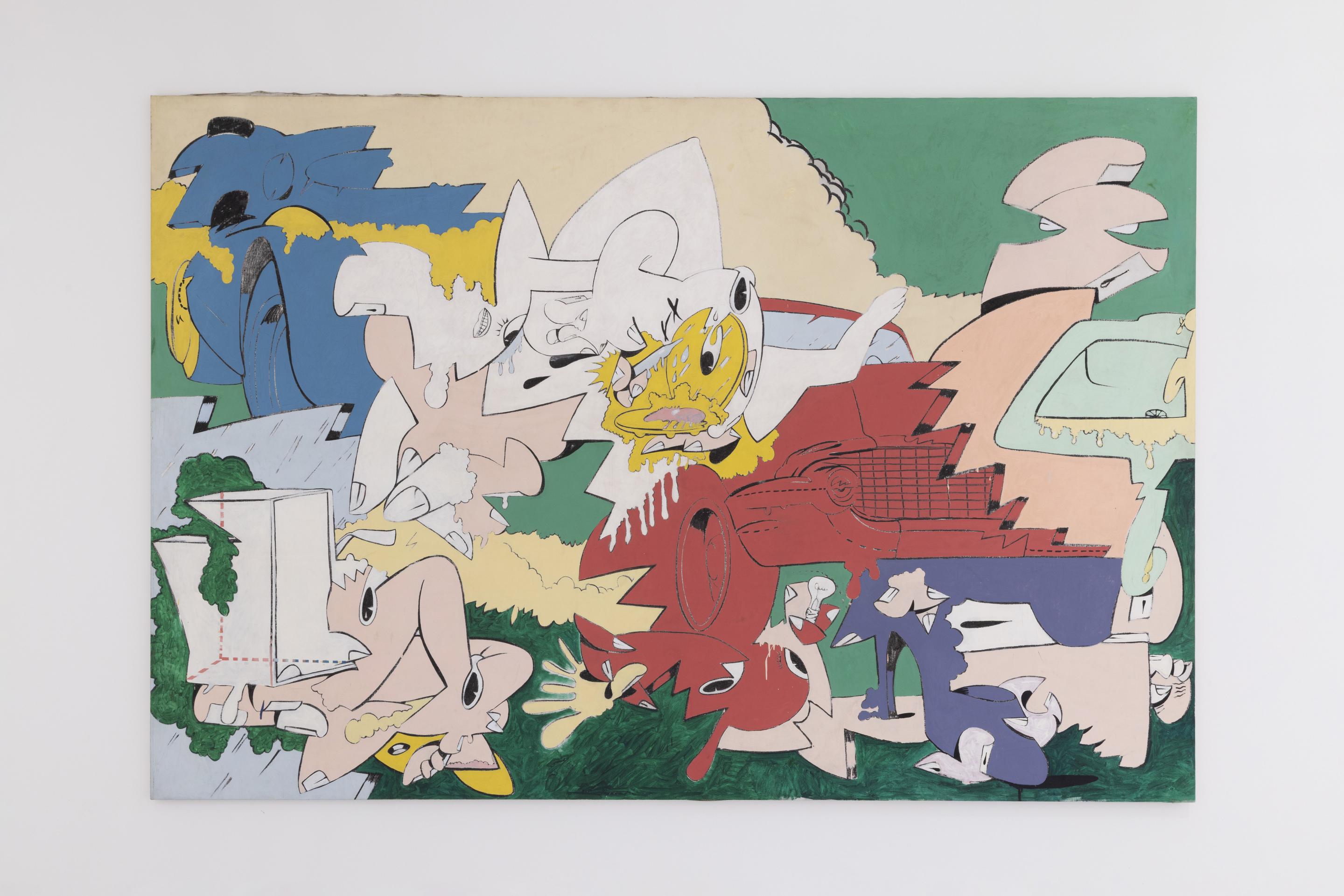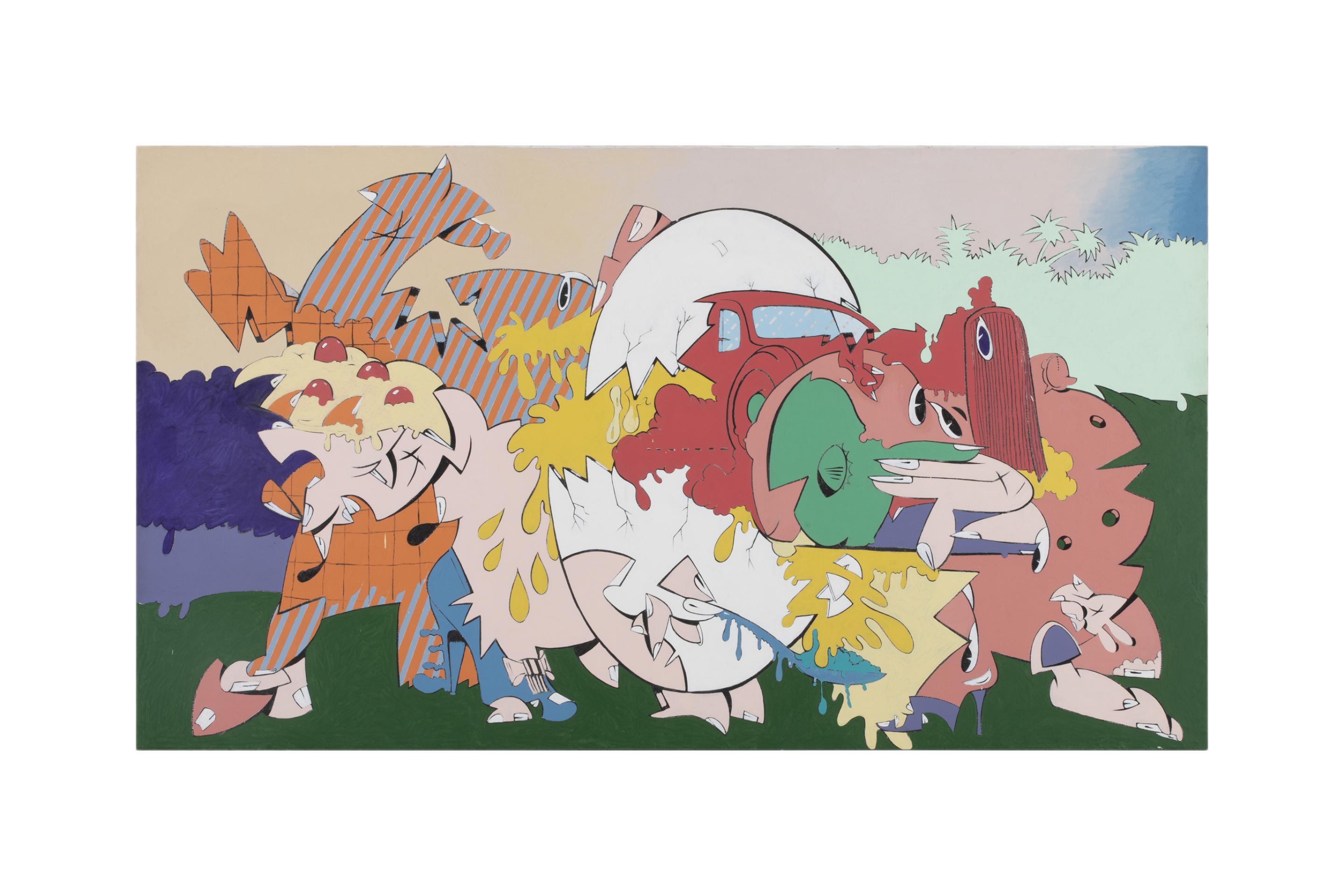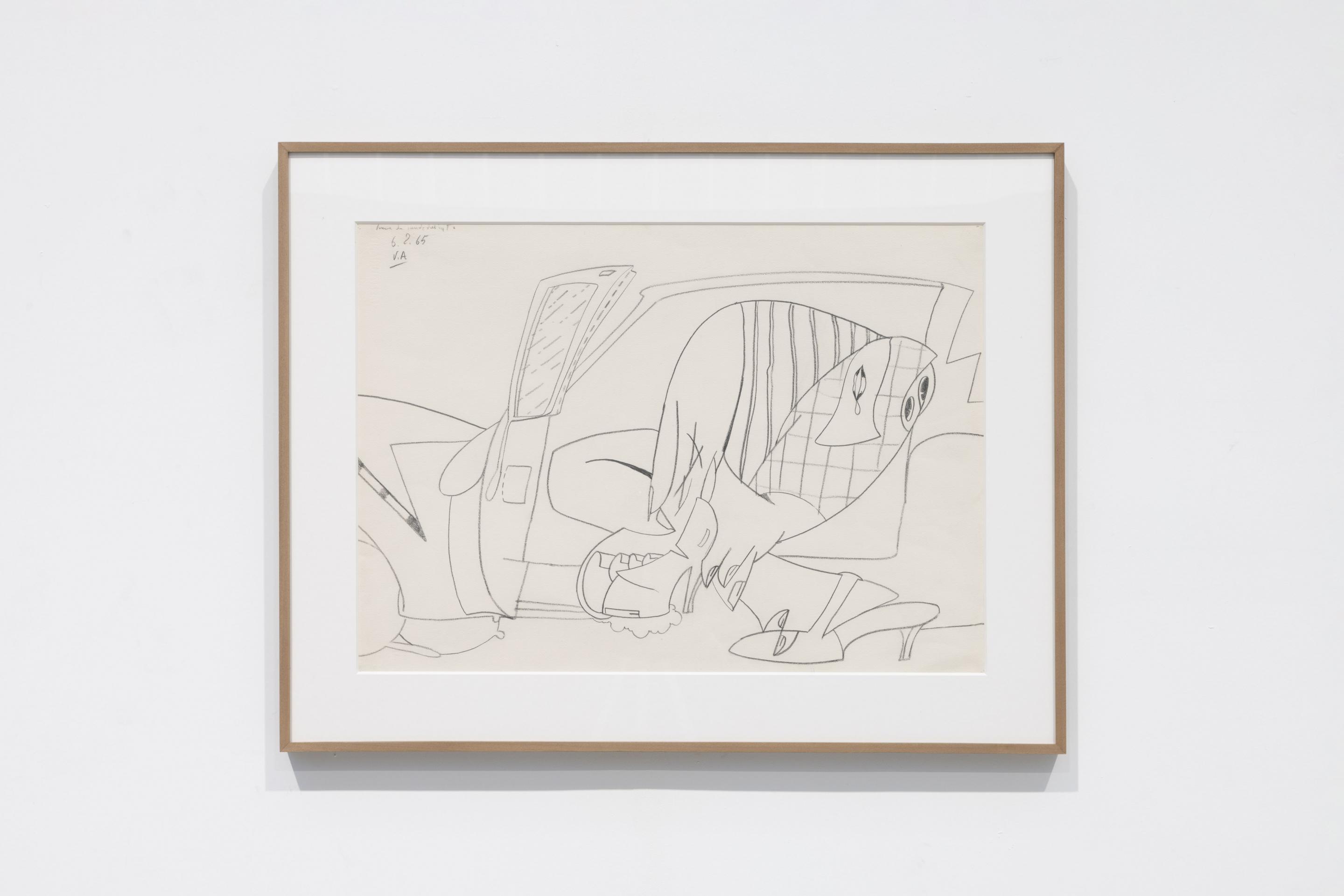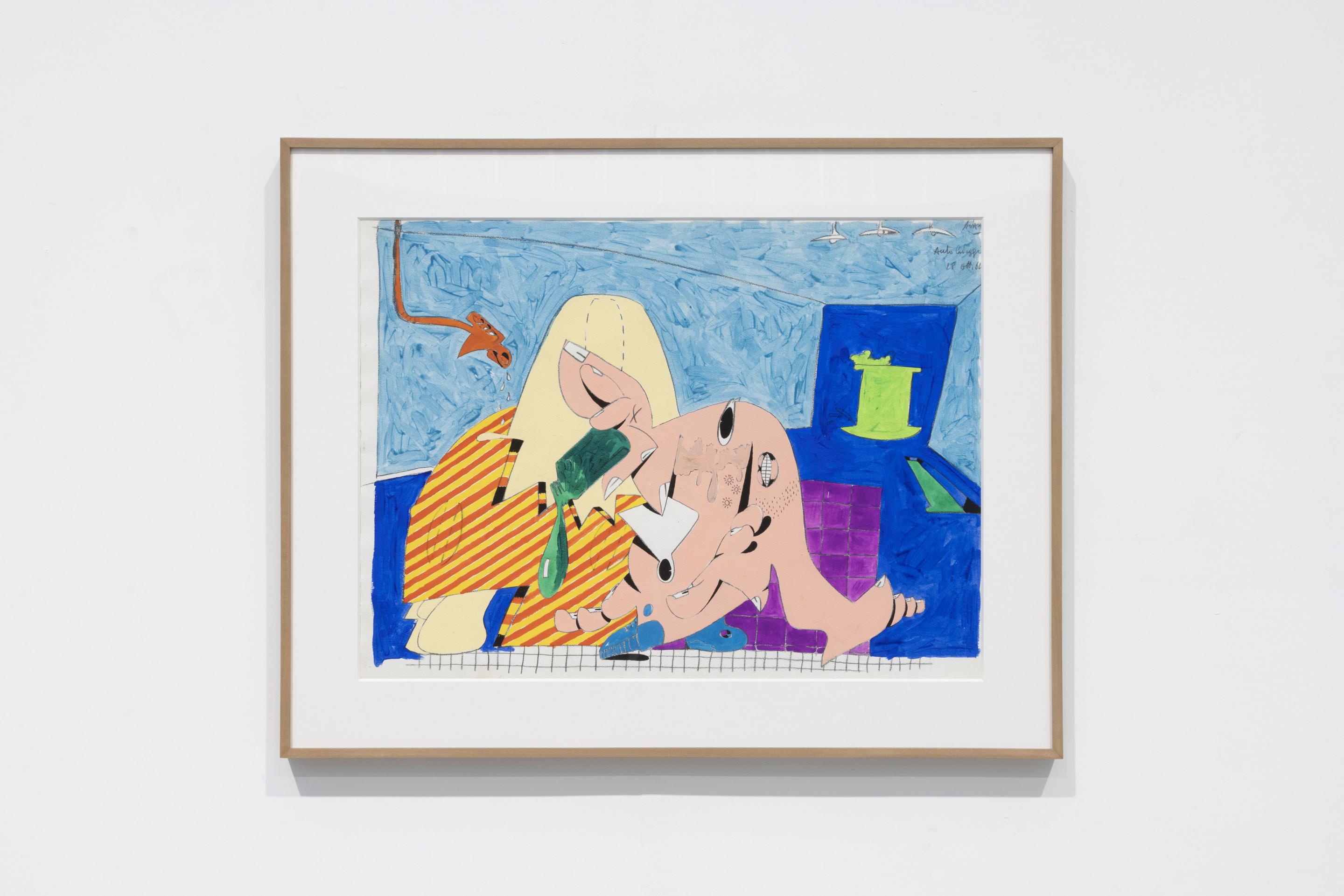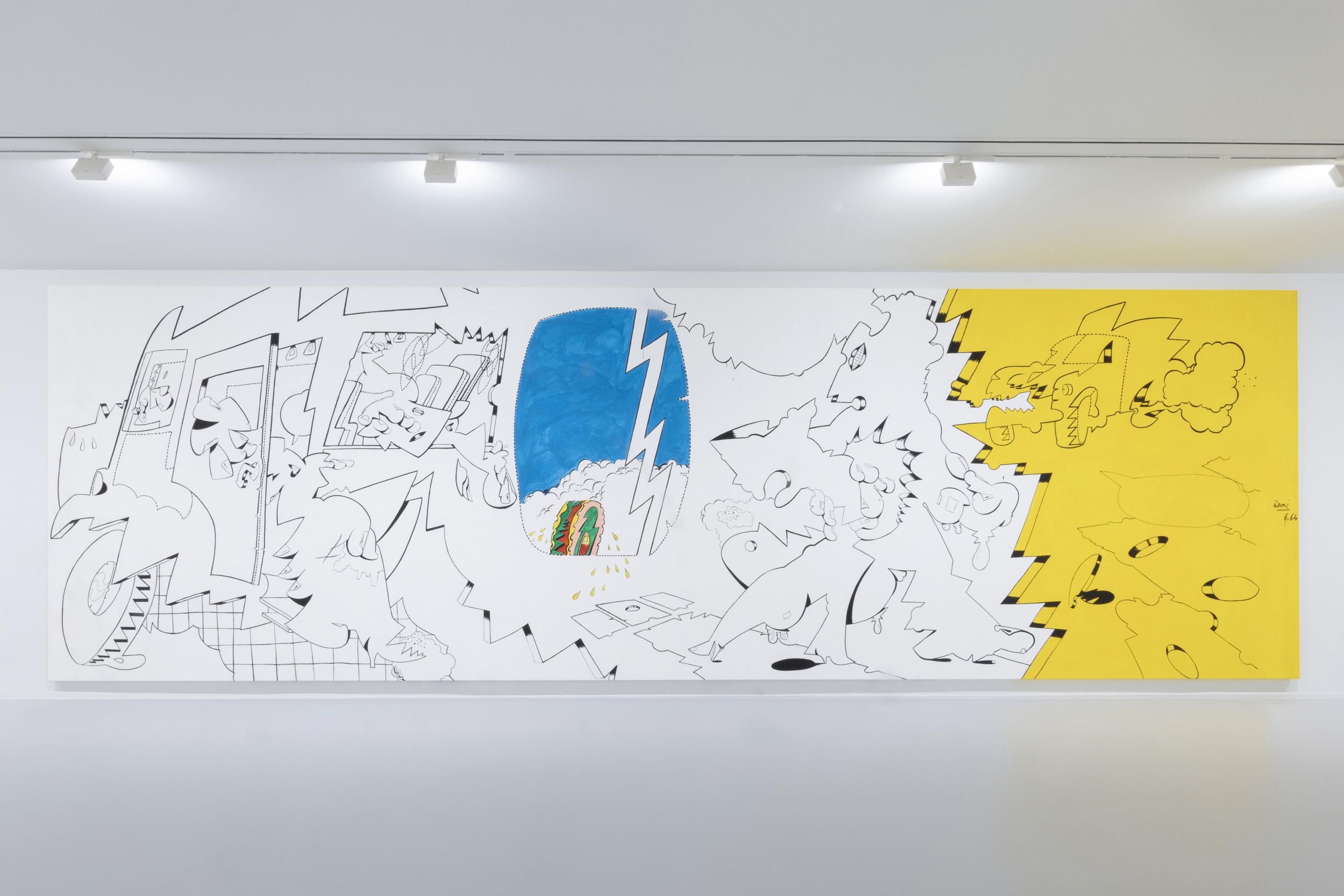ValerioADAMI
About
Valerio Romani Adami was born in Bologna in 1935 and moved to Milan with his family while still a child. In the early 1950s, he went to study at the Accademia di Belle Arti di Brera in Milan. His artistic beginnings were very much influenced by Expressionism and by the memory of a destroyed country after the Second World War.
In the mid 1950s he left Milan and lived between Paris and, later on, London where he met fellow artists Roberto Matta, Wilfredo Lam, Richard Hamilton, Graham Sutherland and Francis Bacon who deeply inspired him, a fact that is also reflected in his works from the late 50s.
During the 1960s he became one of the leading representatives of the Narrative Figuration movement and took part in a number of group and solo exhibitions in Paris, among them the seminal show La Figuration Narrative. He soon gained an international reputation and was shown at documenta III in Kassel (1964), the Venice Biennale (1968) and the Museo de Bellas Artes in Caracas (1969). In 1965, the Studio Marconi had its first Adami exhibition.
Looking at Adami’s work from the 1960s, comic books and cartoons as well as the graphic art of billboards come to mind. Further influences were Cloisonnism, a post-Impressionist movement in which bold, flat forms of color are bordered by black lines, and British Pop art with its inspiration from commercial advertisements, magazines, movies and celebrity culture. In his paintings from that decade, Adami used shapes of flat, saturated colour bordered by pronounced black lines. He similarly used elements from everyday life, inserted them into the structure of his figurative narratives and put them into new and different relationships with each other. The stimulus for his art was the real world as an alternative draft to an artistic ivory tower: “To clarify and give order to the way we represent the real world in which we live… To make use of everyday language, the kind used by people at the café, in the supermarket… To find the concrete origin of the most intimate impulses”. (Valerio Adami 1956-1963. The Years in Milan, Skira, Milan 2015, p. 166).
Many works from the early 1960s depicted pure energy and frenzy: objects blown into a thousand pieces, cosmic rays and dense smoke clouds mixed with speech bubbles, stars, onomatopoetic keywords and body fragments such as lips, fingernails or legs.
In the later 1960s there was a shift away from the uber-energetic earlier depictions towards more static paintings and a slightly darker colour palette. Many of these later works featured seemingly lifeless, deserted, anonymous and impersonal urban spaces and lusciously sensuous, pastel-colored interiors.
A large number of the paintings from the later 60s, was inspired by the numerous photos from Adami’s visit to New York in 1966 where he took pictures of shop windows, hotel rooms, public toilets and subway stations. While in New York, he met Saul Steinberg and Allen Ginsberg and resided and worked at the Chelsea Hotel.
In the 1970s Adami’s style changed considerably. Following the urban spaces and interiors of the 1960s were referential yet enigmatic paintings that juxtaposed letters and phrases with the depicted image. The human figure as a whole much rather than just body fragments became the focal point of his works. The formerly bright colour palette became much more subdued as more earthy and natural tones took hold of his paintings. The pronounced black lines became more subtle and Adami’s overall interest shifted towards literature, history, philosophy, music and mythology.
From the mid 1970s until today, Adami started to examine the occidental intellectual and cultural history in his paintings. The countless cultural and literary references that populate his later works give them a strangely mysterious and enigmatic air.
Throughout the 1970s and 80s, Adami worked on various large scale commissions: he produced five large paintings for the headquarters of the First National Bank of Madison in Wisconsin (1974) and eight stained-glass windows for the town hall of Vitry-sur-Seine (1986). He made two monumental works for the main hall of the Gare d’Austerlitz (1987), and a group of paintings for the foyer of the Théâtre du Châtelet in Paris (1989). In 1994, Adami installed four large paintings at the New York Grill & Bar of the Park Hyatt Hotel in Tokyo.
Valerio Adami has traveled extensively throughout his long career and has frequently spent several months in places, such as New York City, Los Angeles, Mexico and South America, India, Sri Lanka, Japan, Israel, Northern Europe, Ostend and Monte Carlo. As a result of his many trips and his various places of residence, Adami forged friendships with many of the intellectuals of his time.
A number of philosophers such as Jacques Derrida, Jean-François Lyotard, Gilles Deleuze and Hubert Damisch reflected on Adami’s oeuvre and several writers, among them Italo Calvino, Octavio Paz and Carlos Fuentes, responded to the artist’s “literary paintings” with their own texts.
Valerio Adami has had exhibitions at the Jewish Museum, New York (1968), Musée d’Art Moderne de la Ville de Paris (1970), Kunstverein Hamburg (1973), Musée d’Art Contemporain, Bordeaux (1976), Museo de Arte Moderno, Mexico City (1979), Israel Museum, Jerusalem (1979), Centre Pompidou, Paris (1985), Palazzo Reale, Milan (1986), Centre Julio González, Valencia (1990), Museo Nacional Centro de Arte Reina Sofia, Madrid (1991), Museum Bochum (1996), Tel Aviv Museum of Art (1997), Museo Nacional de Bellas Artes, Buenos Aires (1998), GAMeC, Bergamo (1999), Frissiras Museum Athens (2004), among others.
In 2008, Adami was part of the seminal group exhibition Figuration narrative at the Grand Palais in Paris.
A major retrospective to mark his 80th birthday was held in 2015, travelling from Turin to Mantua and Perpignan.
In 2016, the Grafisches Kabinett of the Secession in Vienna hosted the artist’s first solo show in Austria.
In 2024, a large survey exhibition was held at the Palazzo Reale in Milan.
After having lived between Monte Carlo, Paris and Meina, Adami now lives and works in Meina on Lake Maggiore.
In the mid 1950s he left Milan and lived between Paris and, later on, London where he met fellow artists Roberto Matta, Wilfredo Lam, Richard Hamilton, Graham Sutherland and Francis Bacon who deeply inspired him, a fact that is also reflected in his works from the late 50s.
During the 1960s he became one of the leading representatives of the Narrative Figuration movement and took part in a number of group and solo exhibitions in Paris, among them the seminal show La Figuration Narrative. He soon gained an international reputation and was shown at documenta III in Kassel (1964), the Venice Biennale (1968) and the Museo de Bellas Artes in Caracas (1969). In 1965, the Studio Marconi had its first Adami exhibition.
Looking at Adami’s work from the 1960s, comic books and cartoons as well as the graphic art of billboards come to mind. Further influences were Cloisonnism, a post-Impressionist movement in which bold, flat forms of color are bordered by black lines, and British Pop art with its inspiration from commercial advertisements, magazines, movies and celebrity culture. In his paintings from that decade, Adami used shapes of flat, saturated colour bordered by pronounced black lines. He similarly used elements from everyday life, inserted them into the structure of his figurative narratives and put them into new and different relationships with each other. The stimulus for his art was the real world as an alternative draft to an artistic ivory tower: “To clarify and give order to the way we represent the real world in which we live… To make use of everyday language, the kind used by people at the café, in the supermarket… To find the concrete origin of the most intimate impulses”. (Valerio Adami 1956-1963. The Years in Milan, Skira, Milan 2015, p. 166).
Many works from the early 1960s depicted pure energy and frenzy: objects blown into a thousand pieces, cosmic rays and dense smoke clouds mixed with speech bubbles, stars, onomatopoetic keywords and body fragments such as lips, fingernails or legs.
In the later 1960s there was a shift away from the uber-energetic earlier depictions towards more static paintings and a slightly darker colour palette. Many of these later works featured seemingly lifeless, deserted, anonymous and impersonal urban spaces and lusciously sensuous, pastel-colored interiors.
A large number of the paintings from the later 60s, was inspired by the numerous photos from Adami’s visit to New York in 1966 where he took pictures of shop windows, hotel rooms, public toilets and subway stations. While in New York, he met Saul Steinberg and Allen Ginsberg and resided and worked at the Chelsea Hotel.
In the 1970s Adami’s style changed considerably. Following the urban spaces and interiors of the 1960s were referential yet enigmatic paintings that juxtaposed letters and phrases with the depicted image. The human figure as a whole much rather than just body fragments became the focal point of his works. The formerly bright colour palette became much more subdued as more earthy and natural tones took hold of his paintings. The pronounced black lines became more subtle and Adami’s overall interest shifted towards literature, history, philosophy, music and mythology.
From the mid 1970s until today, Adami started to examine the occidental intellectual and cultural history in his paintings. The countless cultural and literary references that populate his later works give them a strangely mysterious and enigmatic air.
Throughout the 1970s and 80s, Adami worked on various large scale commissions: he produced five large paintings for the headquarters of the First National Bank of Madison in Wisconsin (1974) and eight stained-glass windows for the town hall of Vitry-sur-Seine (1986). He made two monumental works for the main hall of the Gare d’Austerlitz (1987), and a group of paintings for the foyer of the Théâtre du Châtelet in Paris (1989). In 1994, Adami installed four large paintings at the New York Grill & Bar of the Park Hyatt Hotel in Tokyo.
Valerio Adami has traveled extensively throughout his long career and has frequently spent several months in places, such as New York City, Los Angeles, Mexico and South America, India, Sri Lanka, Japan, Israel, Northern Europe, Ostend and Monte Carlo. As a result of his many trips and his various places of residence, Adami forged friendships with many of the intellectuals of his time.
A number of philosophers such as Jacques Derrida, Jean-François Lyotard, Gilles Deleuze and Hubert Damisch reflected on Adami’s oeuvre and several writers, among them Italo Calvino, Octavio Paz and Carlos Fuentes, responded to the artist’s “literary paintings” with their own texts.
Valerio Adami has had exhibitions at the Jewish Museum, New York (1968), Musée d’Art Moderne de la Ville de Paris (1970), Kunstverein Hamburg (1973), Musée d’Art Contemporain, Bordeaux (1976), Museo de Arte Moderno, Mexico City (1979), Israel Museum, Jerusalem (1979), Centre Pompidou, Paris (1985), Palazzo Reale, Milan (1986), Centre Julio González, Valencia (1990), Museo Nacional Centro de Arte Reina Sofia, Madrid (1991), Museum Bochum (1996), Tel Aviv Museum of Art (1997), Museo Nacional de Bellas Artes, Buenos Aires (1998), GAMeC, Bergamo (1999), Frissiras Museum Athens (2004), among others.
In 2008, Adami was part of the seminal group exhibition Figuration narrative at the Grand Palais in Paris.
A major retrospective to mark his 80th birthday was held in 2015, travelling from Turin to Mantua and Perpignan.
In 2016, the Grafisches Kabinett of the Secession in Vienna hosted the artist’s first solo show in Austria.
In 2024, a large survey exhibition was held at the Palazzo Reale in Milan.
After having lived between Monte Carlo, Paris and Meina, Adami now lives and works in Meina on Lake Maggiore.
